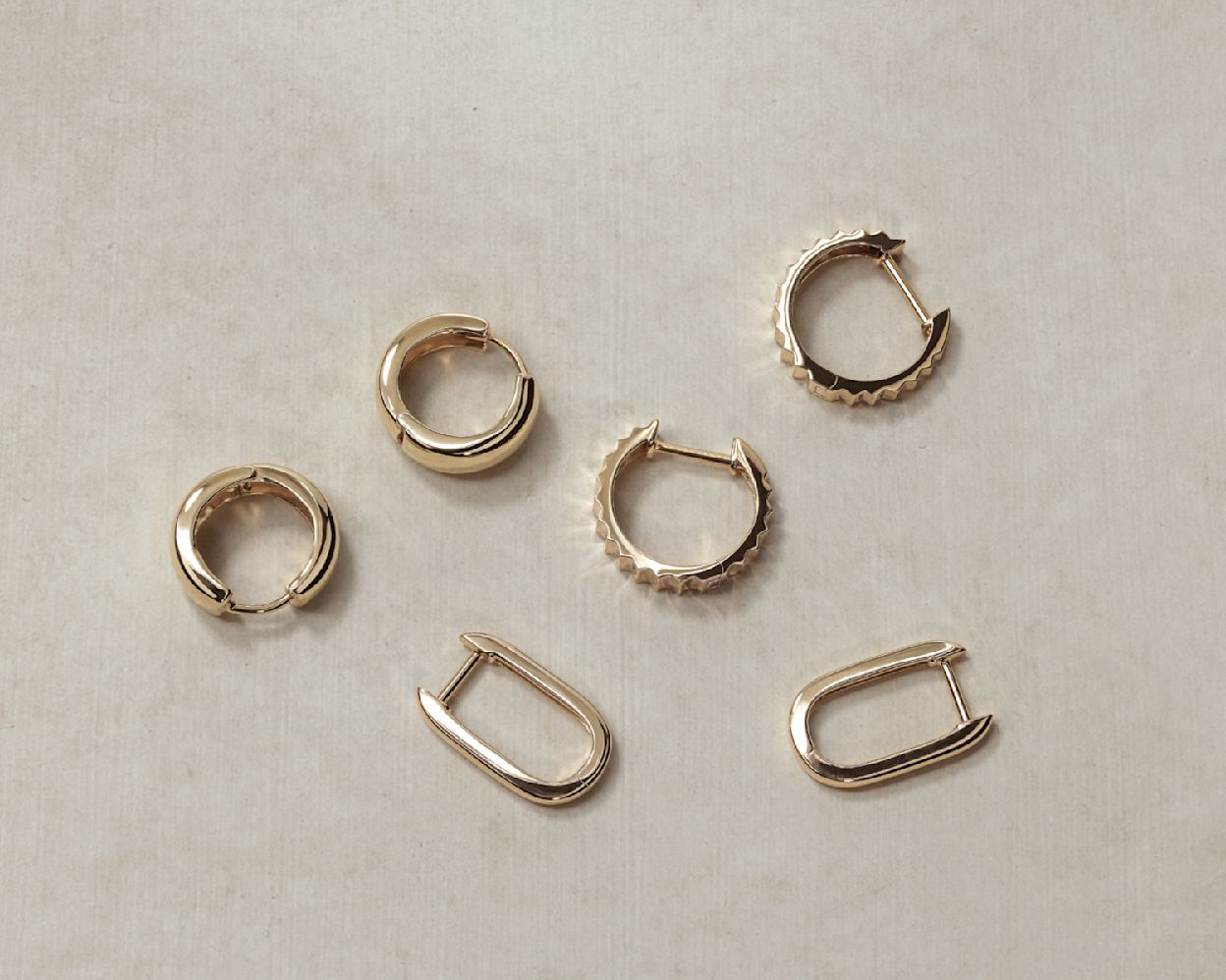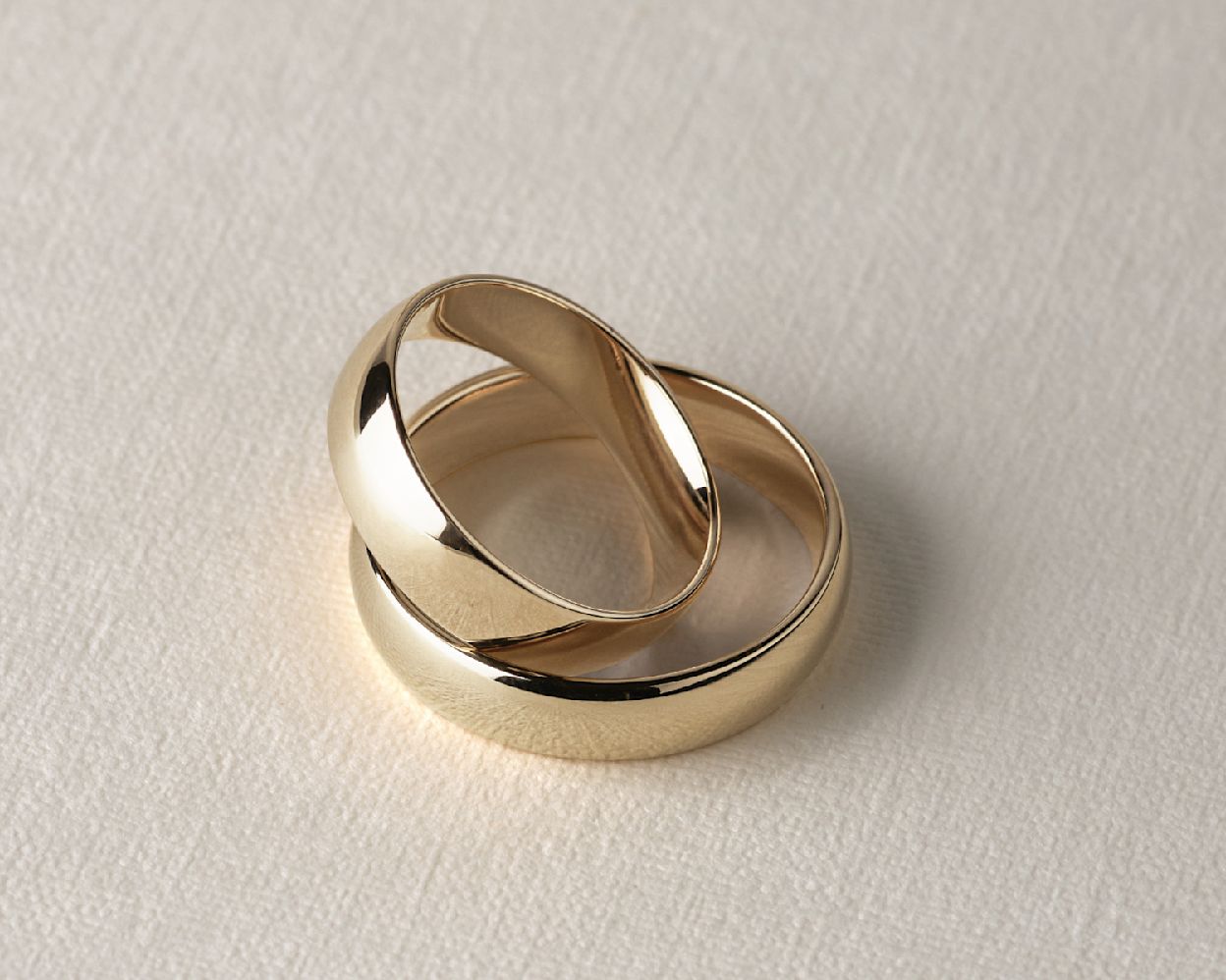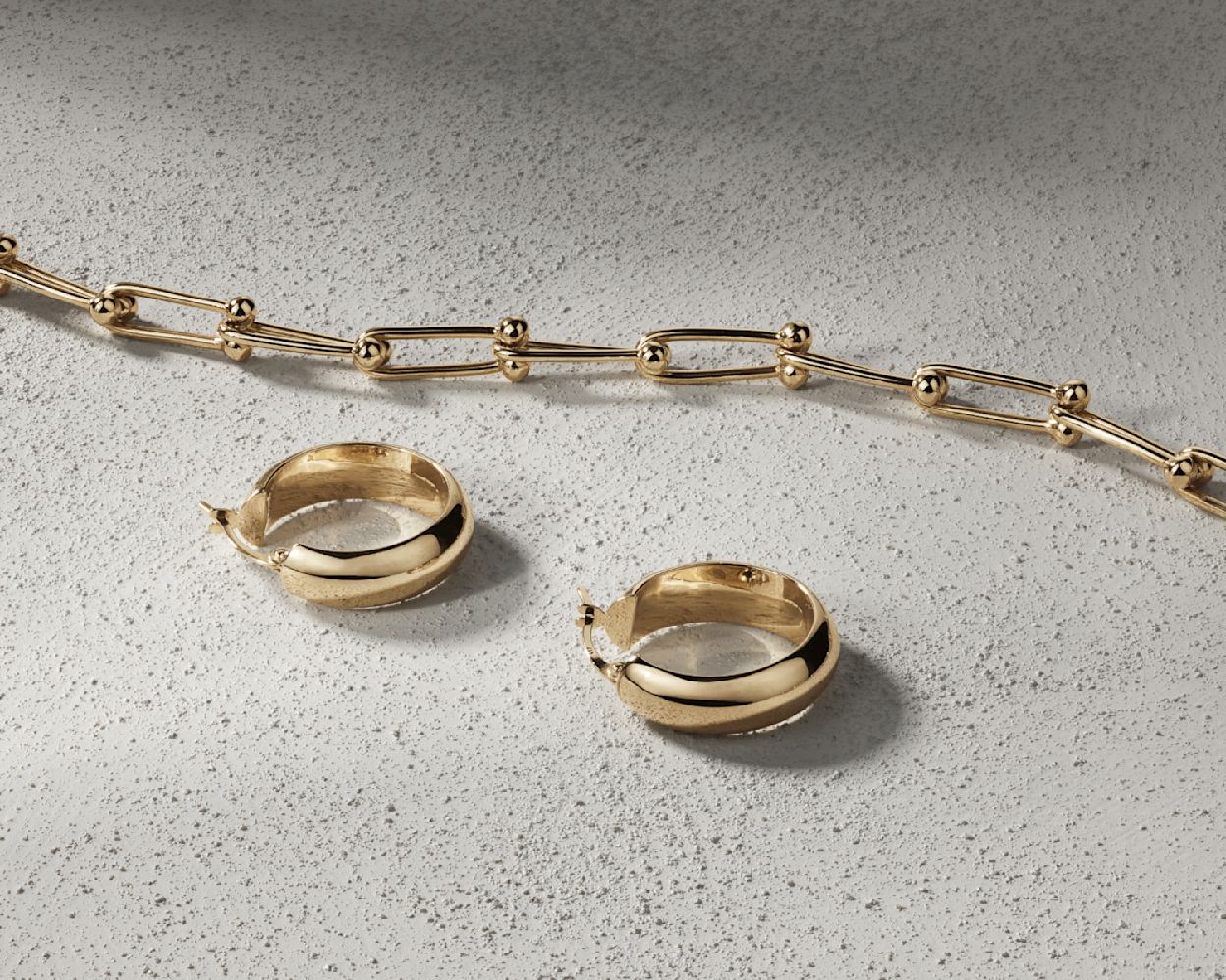
All About Gold: Your Need-to-Know Guide
One of the most precious metals, gold is a timeless must-have for every jewellery collection. Discover what makes gold so special, plus how to choose and care for your perfect gold jewellery pieces.
What is real gold jewellery?
Genuine gold jewellery is crafted with alloys containing the precious, naturally occurring metal, gold. Gold in its purest form is known as 24kt gold. Pure gold is generally too malleable for everyday wear, and so it’s blended with other metals to improve its durability. The result is known as an alloy. Jewellery crafted from these alloys are real gold pieces, and there are various levels of gold purity available. Beginning with 9kt, the percentage of pure gold increases up to 18kt and 22kt which are generally the highest purity levels available for most jewellery.

What does the Michael Hill Gold Standard mean?
At Michael Hill, all of our gold jewellery is crafted in genuine gold alloys of 10kt purity or higher. 10kt gold offers an ideal balance of beauty, durability, and affordability; and for extra special pieces such as wedding bands, engagement rings, and luxury diamond jewellery, you can find many 14kt and 18kt gold options. We are proud to maintain an in-house Australian workshop at Michael Hill, where our expert artisans craft a number of our beautiful engagement rings and select jewellery pieces. Our white gold pieces that are crafted entirely in Australia are made with a special alloy unique to our workshop, which is nickel-free and contains a high content of palladium (a rare, white metal in the platinum family). Our metals are responsibly sourced and our alloys never contain lead, cadmium, mercury, or other toxic heavy metals. While all of our gold jewellery is crafted in real, precious gold, some pendants are sold with complimentary display chains which are gold-plated and are intended to display your pendant beautifully in its box – not for everyday wear.

What is the difference between gold jewellery, and gold plated jewellery?
Gold jewellery is crafted from genuine gold alloys, in which the gold content is consistent throughout the piece. Gold jewellery may be solid in construction, or hollow; which means the piece is carefully crafted to comprise some empty space inside (for instance, the space inside a ring band or inside a chain link). Hollow pieces by their nature will be more delicate than solid gold and should be treated with care; but the beauty is that they offer a genuine piece of gold jewellery at a more accessible price (essentially - the more gold a product contains, the higher the price). Gold-plated jewellery also contains real gold; however, these pieces are crafted from a metal core overlayed with a fine layer of gold. The metal core may be sterling silver or a non-precious metal such as brass or steel. Gold plated jewellery is also likely to require re-plating, as over time it will wear and expose the metal core. If a jewellery piece is labelled as ‘gold toned’, this refers only to the colour of the jewellery and it means the piece does not contain real gold.

What gold does Michael Hill use?
At Michael Hill, all of our gold jewellery is crafted in genuine gold alloys of 10kt purity or higher, including 10, 14 and 18kt gold. Available in different colours—including traditional yellow gold, romantic rose gold, and lustrous white gold—you can be sure each has their own beauty and is made from genuine gold alloys. We never use gold filled or gold plated techniques, and each piece undergoes strict quality assessment, so you can rest assured every gold piece from Michael Hill is genuine, real gold.
What is the difference between yellow, white, and rose gold?
Yellow, white, and rose are all shades of gold jewellery, which are created by alloying pure gold with metals in various other colours. Yellow gold is the closest reflection of the colour of pure gold (which is a dark, deeply lustrous yellow). As the gold is alloyed with other metals to create gold jewellery, the resulting shade is often softer. The higher the gold purity of your jewellery piece, the more intense its yellow hue will be. White gold offers a similar appearance to platinum, and it’s the most popular shade of gold for engagement rings due to its neutral colour that emphasises the brightness of white diamonds. This timeless colour is achieved by alloying metal such as silver or palladium and sometimes nickel with pure gold to neutralise its yellow nature. White gold jewellery is then plated with rhodium as a final step; another type of white metal that is brighter, rarer, and highly valuable. This finishing technique has been used since the 1930s as a solution to conceal the yellow tone, in addition to enhancing the brightness of white metals like white gold and sterling silver. It is highly recommended to have your rhodium plating reapplied from time to time as part of regular maintenance. Rose gold is a beautifully warm and romantic shade. The most unique of the three shades, rose gold is nonetheless timeless; often thought of as a modern trend, in fact it was first created in the 19th Century. Its colour is created by blending pure gold with copper, and often silver to soften the shade and produce a pink tone. It’s important to note that there is no such thing as ‘pure’ or naturally occurring white gold or rose gold. These colours can only be achieved by blending pure gold with other metals. Similarly, yellow gold is only pure if it is 24kt.

Is there a difference between white gold and platinum?
Yes, white gold and platinum are entirely different metals and properties. White gold is created by blending pure gold with white metals; whereas platinum is another, naturally occurring white metal. Platinum is favoured for jewellery such as engagement rings because of its naturally white property, its durability, and its strong resistance to scratches due to the high density (20% denser than white gold) this material offers. As platinum is very hard, it’s often alloyed with a small amount of other metals to improve its malleability. White gold, on the other hand, is more obtainable and lighter than platinum. It offers substantial durability and affordability at the same time. However, it does require periodic re-plating of rhodium over time to maintain that high-shine white appearance.

How do I care for my gold jewellery?
While good quality gold will give you years of lustre, it’s important to care for your jewellery properly to keep it shining like new. We recommend bringing your precious gold jewellery into your nearest Michael Hill store for complimentary, professional cleaning. For your most valued pieces, you may also purchase a Professional Care Plan to keep your pieces looking their best. Polishing your gold with a soft cloth (such as a jewellery cleaning cloth or glasses cloth) regularly will remove dust and keep it shining. Over time, your jewellery will gather dirt in the form of oils, makeup, and so on from wear, and you can clean it using a small amount of mild detergent and warm water. Soak your jewellery in the solution, then gently scrub with a very soft toothbrush to remove grime. Rinse and dry your jewellery thoroughly and gently. It's best to avoid harsh chemicals coming into contact with your gold jewellery, especially chlorine – so try not to wear your jewellery in the pool or spa. It’s also best to remove your jewellery or wear protective gloves before using chemicals such as household cleaners. Take your jewellery off at the end of the day, and store it somewhere safe such as a jewellery box. Ideally, keep your pieces separated – either in their original boxes, or in a jewellery box that allows you to store your pieces separately. Hang up your chains, or store them somewhere they can be laid flat and away from other jewellery so they don’t become tangled. Take extra care with hollow gold pieces. Ask our expert teams in-store or book your virtual appointment , for help choosing the right gold chain to hold your favourite pendants.

Which gold jewellery pieces should I own?
Choosing a new jewellery piece, especially one crafted in gold which you plan to treasure and wear for a long time to come, comes down to your personal taste and the styles you love most. If you aren’t sure where to start, these are some of our top, essential picks for your jewellery wardrobe. These versatile, timeless styles will give you plenty of wear and match beautifully with your existing pieces: